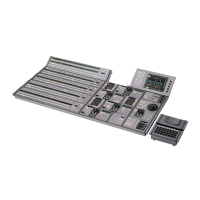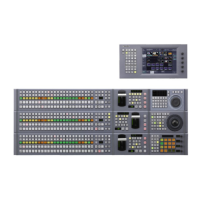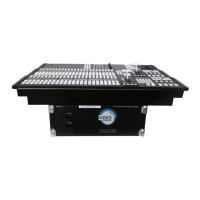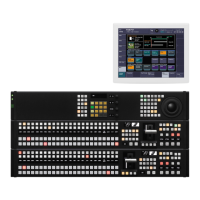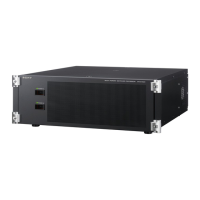Key Adjustments (Key Control Block)
Select the DME channel 1 (or channel 5) for the first
channel (see “Assigning a DME to a key” (page 147)).
In the same way, select the DME channel 2 (channel 6)
for the second channel, the DME channel 3 (channel 7)
for the third channel, and the DME channel 4 (channel
8) for the fourth channel.
For the second channel video signal, select the signal
on the DME external video bus.
To select the third channel video signal, when the
selected DME is Ch3, select the signal on the DME
utility 1 bus. When the selected DME is Ch7, select the
signal on the DME utility 2 bus.
To select the fourth channel video signal, when the
selected DME is Ch4, select the signal on the DME
utility 2 bus. When the selected DME is Ch8, select the
signal on the DME utility 1 bus.
For details of the method of signal selection, see “Bus
Notes
•
On the MVS-8000X, when the signal format is 1080P,
this operation cannot be carried out.
•
On the MVS-7000X, when the signal format is 1080P,
the above restriction also applies if using the MVE-
8000A. There is no such restriction for the MKS-7470X/
7471X.
2 To check the DME assignment status, hold down just
the [MON] button.
While it is held down, the lit color of the [DME1] to
[DME8] buttons shows the key assignment status.
Lit green: Shows the DME currently being
monitored.
Lit amber: Shows a DME which can be monitored.
Off: DME is not assigned.
Other Key Setting Operations
When using the SDI interface
The operations to select the video signals for the third and
fourth channels differ from those in the previous
procedure: select the video signals on the AUX bus
allocated in a Setup menu (Engineering Setup >Switcher
>Device Interface >DME Setting >DME SDI Interface
menu).
Notes
When using a second key in combination with a dedicated
interface, select the signal to be used on the AUX bus.
You can check the DME operating status in the Status
menu (see page 236).
Assigning the DME output signal to a
monitor signal
1 Holding down the output destination specification
button [MON] in the key control block, use the DME
channel selection buttons to select the DME channel
(DME1 to DME8) you want to use.
The selected DME output is assigned to DME MON V
and DME MON K.
Using an external processed key
You can select and use the key processed keyer key fill and
key source signals on the AUX buses.
1
Select the keyer to be allocated.
2
In the key control block, press [PROC KEY], turning
it on.
The button lights amber, and on the currently selected
keyer, the key fill and key source are assigned to
reentry signals PROC V and PROC K.
When a DME is selected on the currently selected
keyer, the key fill and key source signals to which the
DME effect is applied are assigned to PROC V and
PROC K.
Notes
You cannot select the PROC V and PROC K signals using
the cross-point selection buttons of the M/E or PGM/PST
bank.
Using a frame memory feed
When you press the [FM FEED] button in the key control
block, it lights momentarily amber, then the key fill and
key source signals processed in the currently selected
keyer are assigned to frame memory sources 1 and 2.
If a DME is selected on the currently selected keyer, then
the key fill and key source signals to which a DME effect
is applied are assigned to frame memory sources 1 and 2.
Carrying out a frame memory feed causes the [PROC
KEY] button to light amber.
Using the show key function
While the [SHOW KEY] button is held down, the key-
processed key source signal appears on the specified
output (Show key mode).
Even when the [SHOW KEY] button is released, for a
preset time the show key mode is maintained. You can
specify the output to which the show key function is
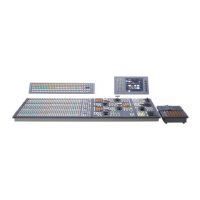
